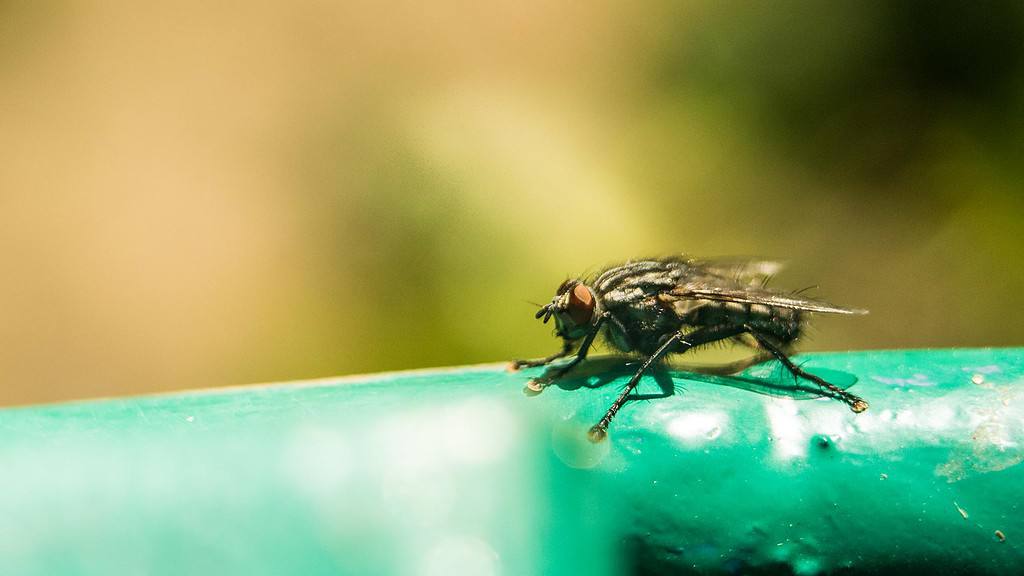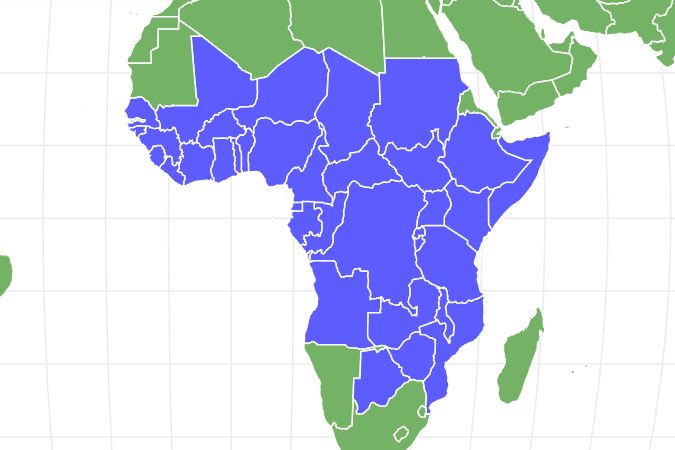Tsetse Fly
Tsetse flies are large biting flies that live in the tropical regions of Africa.
Advertisement
Tsetse Fly Scientific Classification
Read our Complete Guide to Classification of Animals.
Tsetse Fly Conservation Status
Tsetse Fly Facts
- Location
- Sub-Sahara Africa
View all of the Tsetse Fly images!
Tsetse flies are a type of blood-sucking insect that lives in diverse locations in Sub-Sahara Africa.
There are about 27 different species of tsetse flies, which have been given the scientific name of Glossina. The pronunciation of tsetse is tse-see, according to Merriam Webster. This insect’s deadly bite, which you may not even notice, kills thousands each year.
5 Incredible Tsetse Fly Facts!
- Both male and female Tsetse flies draw blood from humans by biting them.
- The female tsetse fly stays pregnant for her entire lifespan, which is about 4 months. The male only impregnates her one time, and she holds the eggs in a special sack where she develops them one at a time.
- Diseases transmitted by the tsetse fly kill about 275,000 people annually.
- Tsetse babies develop life inside the mother fly before being buried in the ground inside a small, hard-shelled puparia before they finally metamorphize into a fly.
- Tsetse flies are also called tik-tik flies.
Tsetse Fly Species, Types, and Scientific Name
The scientific name of this insect is Glossina. The pronunciation of Glossina is glos·si·na, according to Merriam Webster. The pronunciation of Tsetse varies around the world. These flies are insects that belong to the Diperra order. They are all part of the Hippoboscoidea superfamily and the Glossinidae family. They also all belong to the glossina genus.
Biologists divide the glossina genus into three subgroups based on their behavior, how their molecules are arranged and their morphological structure: It is often easier to think about them being divided into groups by their preferred location because different types live in different habitats.
- Morsitans – This subgenre of four species generally live in savannah areas of Africa.
- Fusca – This subgenre of 12 species lives in the forest.
- Palpalis – This subgenre includes seven species often called ‘riverine’ and ‘lacustrine’ flies.
Appearance: How to Identify Tsetse Flies
Tsetse flies are between 0.25-and-0.5-inches big or about the size of a housefly. Depending on the species, they are yellowish-brown to dark brown. All tsetse flies have a gray area on their thorax. You may see faint bands on their abdomens.
The head of a tik-tik fly has large eyes on each side of its head. The thorax is made up of three fused segments and is large for the size of the fly. The abdomen is short and wide. It gets noticeably wider when the fly eats.
Tsetse flies can look different depending on the phase of the life cycle that they are in currently. The life cycle begins with the egg hatching. Then, about four days later, the male has sex with the female. While the act only happens once, the female remains pregnant for the rest of her life. An egg is passed into a special sack on her body every nine days, where she feeds it a unique substance. In a couple of days, she lays the egg, and the life cycle begins again. Females will continue to lay eggs throughout their life cycle, which lasts for about 4 months.
Entomologists look for at least four characteristics when deciding if an insect they are examining is a member of the glossina genre.
- Proboscis – This long thin structure is attached to the bottom of the head and points forward.
- Wings – The tik-tik fly can fold one of its wings completely over its body and put the other one on top of the first one when it is resting.
- Hatchet cell – The middle cell of each wing looks like a hatchet.
- Bristled antennae – The tsetse fly has branched bristles that are covered in hair.
It is the bite of the tsetse fly that makes them so dangerous to humans. Researchers at the University of Bristol have discovered that the fly uses its teeth to tear through the skin and capillaries. Then, it uses its rasps to make the hole bigger. Researchers were surprised to learn that the tsetse fly projects a substance from its proboscis, a long tube in the insect’s mouth, that keeps its victim’s blood from clotting. Researchers have not found this proboscis tube in any other insect.

©Vladimir Sitkovskiy/Shutterstock.com
Habitat: Where to Find Tsetse Flies
These insects live in sub-Sahara Africa. Depending on the species, they can be found in several habitats. Most prefer to live in wooded areas. They will stay in the woods’ underbrush, where they often hide under logs or rocks. Tik-tik flies prefer to live close to their food source as they spend most of their time resting.
Diet: What Do Tsetse Flies Eat?
These insects feed on blood. Each species has a food source that it prefers. Only one species is a generalist that feeds on any blood available, but others may feed off other sources if their preferred source is unavailable. Many species prefer to dine on animals, like cattle, and not on humans.
While it was thought that tsetse flies only fed on blood for a long time, researchers know that is not always the case. If the fly gets hungry enough and no blood is available, it may feed on water or water with sugar. This finding may be important in helping to control the tsetse fly.
Prevention: How to Get Rid of Tsetse Flies
Researchers continue to study how to get rid of tsetse flies because they are so dangerous. Some sprays can effectively control tsetse flies, but they can be costly and difficult to obtain in the needed areas.
These insects can also be trapped. They want a place to rest under a large object, and they want a source of blood. Therefore, researchers have discovered that they can trap them by providing these two things. They have also found that they are drawn to the color blue. Since these flies can see approximately 165 feet, it can be challenging to provide enough traps to cover the whole area where tsetse flies live.
Screens can also kill these insects, but they only work when the screen is covered with a repellent. The most effective screens are placed near where tsetse flies live. They are made of blue material with a black strip down the middle covered with repellent. The blue color attracts the tsetse. Then, they try to land on the black strip to rest, and they die. Keep in mind that incomes in the area where tsetse flies live can be meager, so repellent can be very expensive.
View all 133 animals that start with TTsetse Fly FAQs (Frequently Asked Questions)
What is a Tsetse Fly?
The tsetse fly, also called the tik-tik fly, is a blood-sucking fly that kills up to 275,000 annually in Sub-Sahara Africa. The fly is about 0.5-inches big and carries many diseases, including sleeping sickness.
What Happens if You Get Bitten by a Tsetse Fly?
Tsetse flies can transmit many different diseases to your body. The deadliest disease is African sleeping sickness. There are two types of sleeping sickness, and the tsetse fly transmits West African sleeping sickness, which is also called Gambian sleeping sickness. The fly bite causes the Trypanosoma brucei gambiense parasite to enter the person’s body.
The West African sleeping sickness is most prevalent in the Democratic Republic of Congo, Angola, Sudan, Central African Republic, Republic of Congo, Chad, and northern Uganda. The disease, which takes several months to progress, enters the central nervous system, where it can be life-threatening if left untreated. The condition can be transmitted from mother to fetus through the bloodstream.
Can a Tsetse Fly Kill You?
Yes, the tsetse fly can kill you because it can cause the Trypanosoma brucei gambiense parasite to enter your bloodstream, causing sleeping sickness. This disease can be hard to diagnose because the confusion that it causes often is not apparent for several months. When it is not treated, then the parasite eventually attacks the central nervous system causing death.
Why are Tsetse Flies Dangerous?
Tsetse flies are dangerous because they can cause sleeping sickness.
Are Tsetse Flies in America?
No, the tsetse fly is not currently found in America. Fossils of tsetse flies have been found in numerous West Coast locations, especially Colorado, so researchers know that the fly once lived in this country.
Thank you for reading! Have some feedback for us? Contact the AZ Animals editorial team.
Sources
- Animal Life, Available here: http://animal-wildlife.blogspot.com/2012/01/10-interesting-tsetse-fly-facts.html
- Wikipedia, Available here: https://en.wikipedia.org/wiki/Tsetse_fly
- Who, Available here: https://www.who.int/water_sanitation_health/resources/vector178to192.pdf
- Science Direct, Available here: https://www.sciencedirect.com/science/article/pii/S1567134815003925
- Science Daily, Available here: https://www.sciencedaily.com/releases/2017/09/170921110658.htm
- Pub Med, Available here: https://pubmed.ncbi.nlm.nih.gov/32503681/
- BBC Earth, Available here: http://www.bbc.com/earth/story/20161216-a-bite-from-this-fly-puts-you-into-a-deadly-sleep
- CDC, Available here: https://www.cdc.gov/parasites/sleepingsickness/gen_info/faqs-west.html
- University of Colorado Museum, Available here: http://npshistory.com/publications/flfo/pprs-1.pdf

















